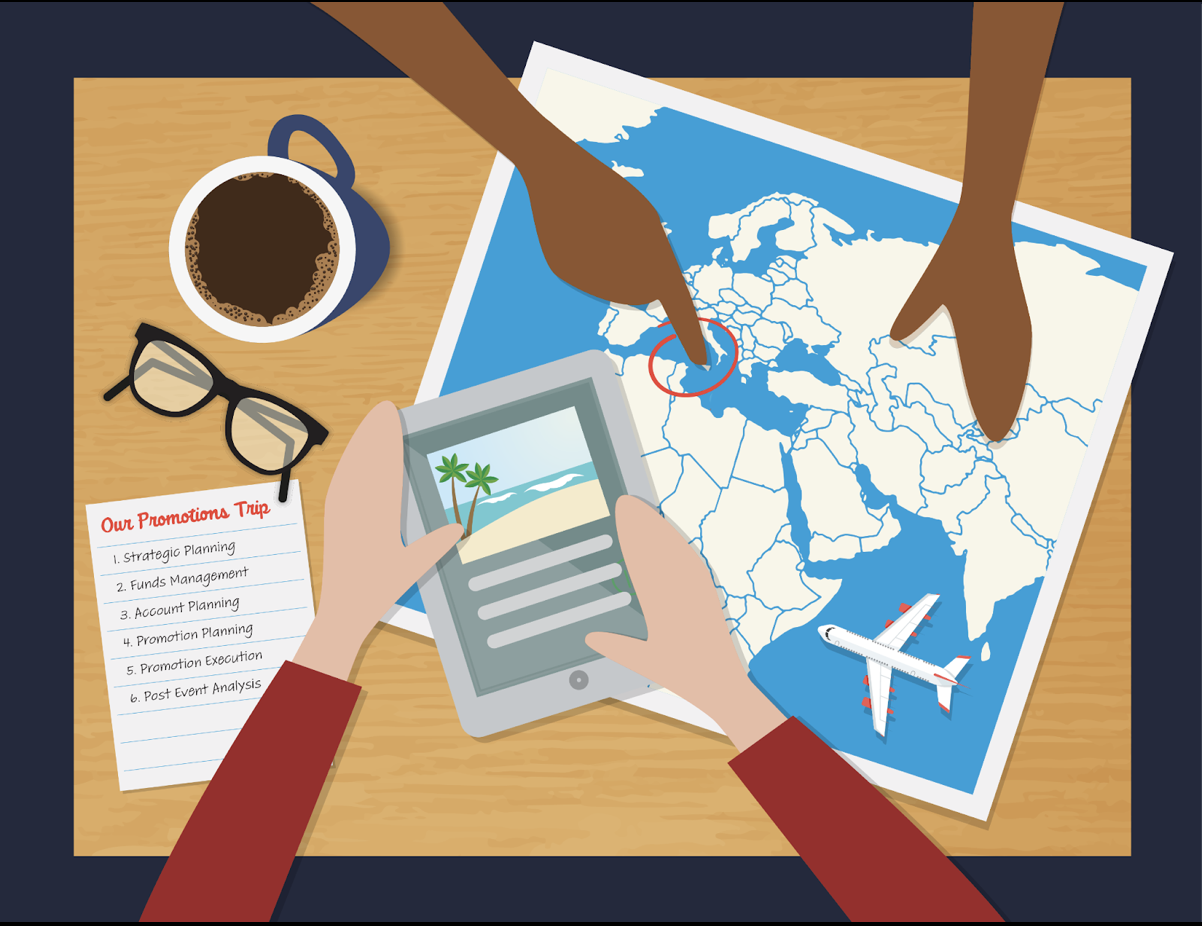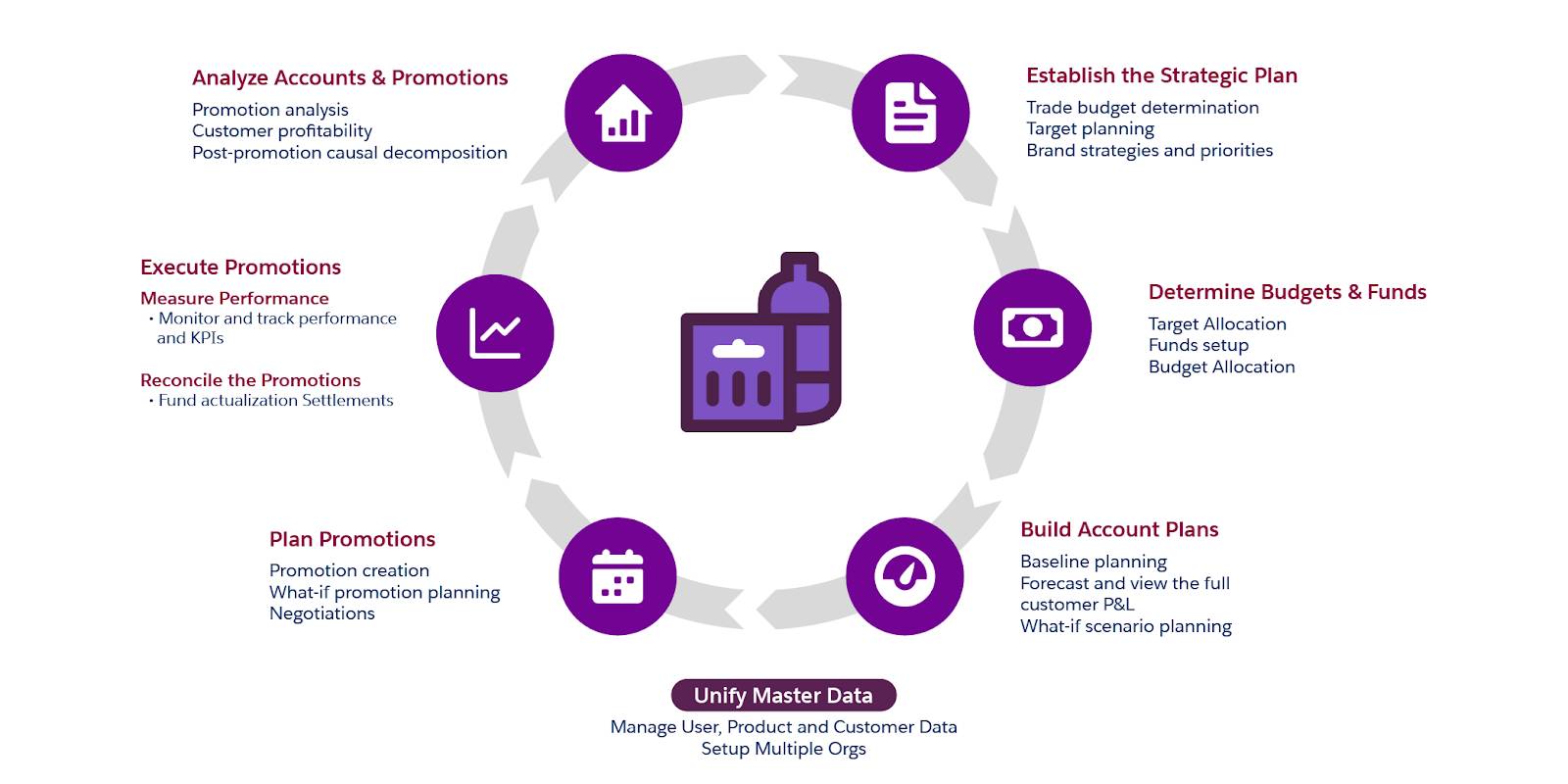Get Started with Trade Promotion Management
Learning Objectives
After completing this unit, you’ll be able to:
- Explain the purpose and benefits of trade promotion management.
- Describe the components of the trade promotion management cycle.
- Explain the responsibilities of the key account manager.
What Is Salesforce Trade Promotion Management?
As you wander through a grocery store, odds are you’ll come across a giant display of a new snack or beverage. Ever wonder why the retailer is promoting that specific product? How do retailers and manufacturers decide what to promote and when to promote it?
Consumer goods companies juggle countless promotions at once. To keep things organized, they need a process that streamlines promotions and delivers on objectives. Salesforce provides tools for these customer needs. It all happens through Salesforce Consumer Goods Cloud Trade Promotion Management (TPM)—the process of planning, budgeting, collaborating on, and executing promotional incentive programs with consumer goods manufacturers and retail partners.
Managing trade promotions is like planning a trip to a destination. Just like travelers review maps and checklists to start planning their next journey, you need to plan and set up each step of your TPM journey.

Promotions Are Important
Consumer goods manufacturers frequently introduce new products, set sales targets, and expand product categories. Trade promotions play a huge role in meeting these targets and building business success for brands. In fact, consumer goods manufacturers spend between 11% and 27% of their gross revenue on trade promotions.
Promotions help manufacturers sell more products at specific retailers. But the benefits aren’t just for manufacturers. Retailers also boost their sales and usually earn additional money and incentives from the manufacturers.
Promotions benefit manufacturers by:
- Introducing new products and increasing their chance of success
- Strengthening brand recognition
- Boosting sales figures
Trade Promotions and Salesforce TPM
When manufacturers and retailers run several different promotions simultaneously, they need TPM to manage them. Here’s a snapshot of how it works.
In TPM, a promotion is the time frame for promoting products to achieve sales targets. TPM provides a single view of all active promotions across all stages. It outlines and displays the full course of the journey, from beginning to end, and helps teams keep tabs on all their promotions.
Each promotion includes different tactics—the executable parts of the promotion—which increases sales and incurs cost. Most people think of tactics when they think about promotions—the displays, the discounts, and the special deals.
Of course, it costs money to create promotions, bring them to life, and make sure retailers don’t lose money in the process. Hence the need for TPM and the ability to properly manage promotions and their budgets.
A Bird’s-Eye View of the TPM Process
Before we dive into the entire TPM journey, let’s check out the different phases of the process.
TPM Process Phase |
What Happens |
|---|---|
Strategic Planning |
|
Funds Management |
|
Account Planning |
|
Promotion Planning |
|
Promotion Execution |
|
Post-Event Analysis |
|

Meet the Key Account Manager
Although TPM is an involved process, it delivers outstanding results for manufacturers and retailers. Someone has to guide the process and the players to bring the promotion to life.
Meet Gustavo De Luca, Key Account Manager (KAM) for Alpine Group Nutrition & Beverage. He manages the retail account Northern Trail Outfitters (NTO), a nationwide store chain in the American West region.

Gustavo has several responsibilities, including the following.
- Create account plans and manage general account duties like coordinating events, negotiating contracts, and tracking performance.
- Support the development and implementation of strategic plans based on understanding of assortment voids, opportunity gaps, and category trends.
- Analyze data and results to improve strategies.
- Plan and run promotions.
- Monitor results, identify risks, and propose corrective actions.
Once Gustavo and his team are ready to start the new trade cycle and the TPM journey, they begin at the finish line. That is, they decide their final destination and design a roadmap to get there. In the next unit, we join Gustavo as he determines the promotion strategy for NTO and identifies the funds needed to run the promotions.
Resources
- Salesforce Blog: Everything You Know About Trade Promotion Management Is Wrong
- Salesforce+ Session: Consumer Goods Cloud: Newest Innovations and Roadmap (Login Required)